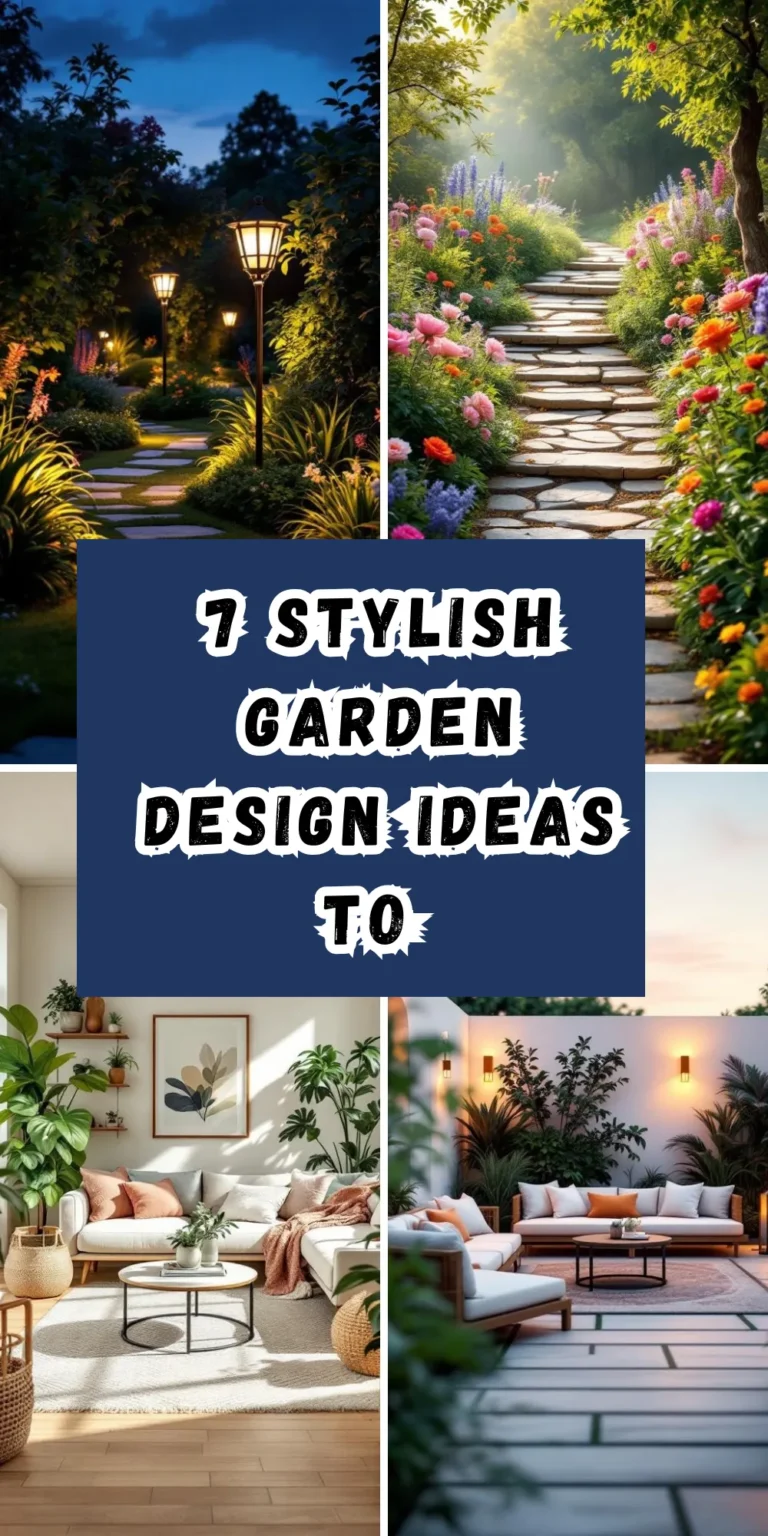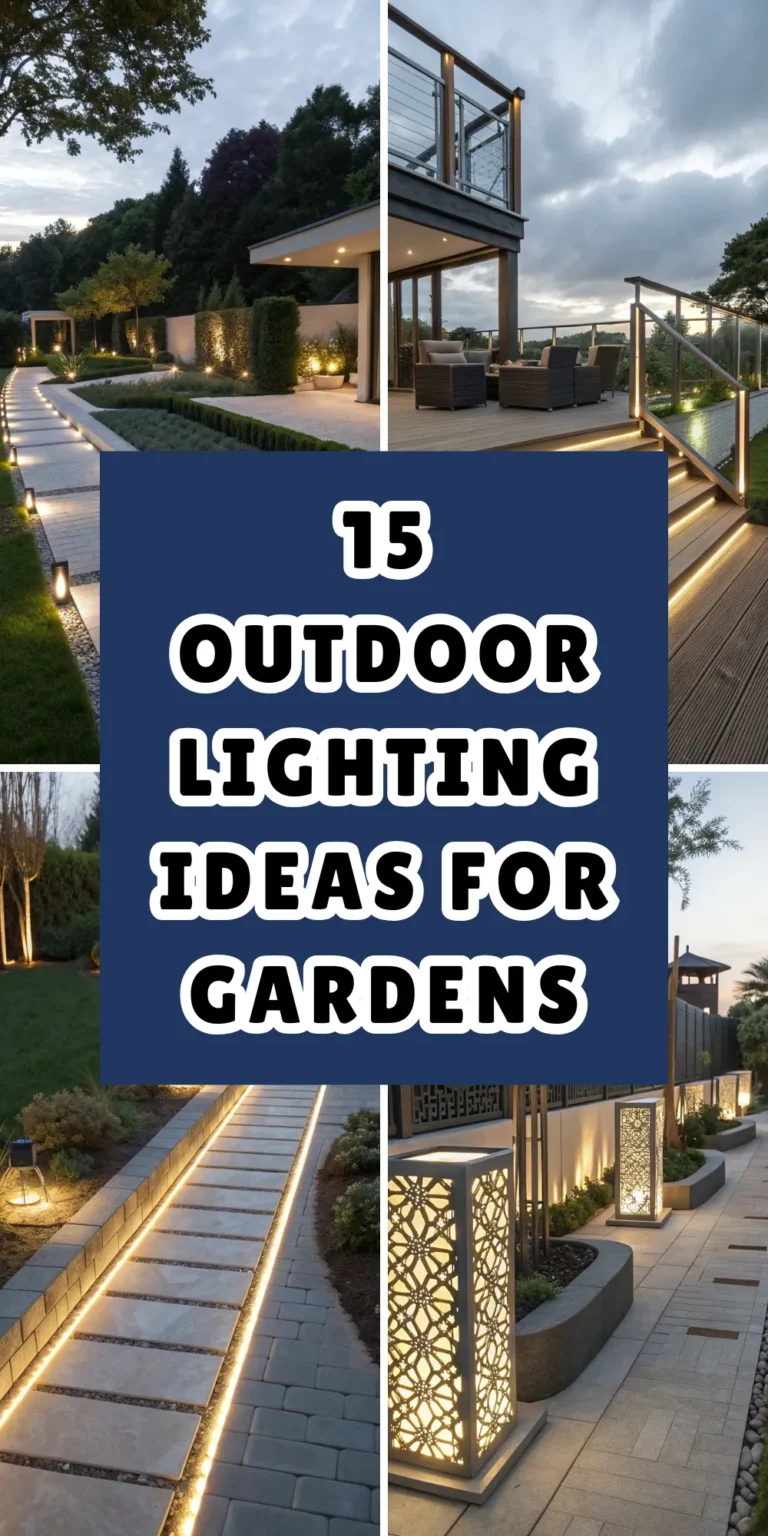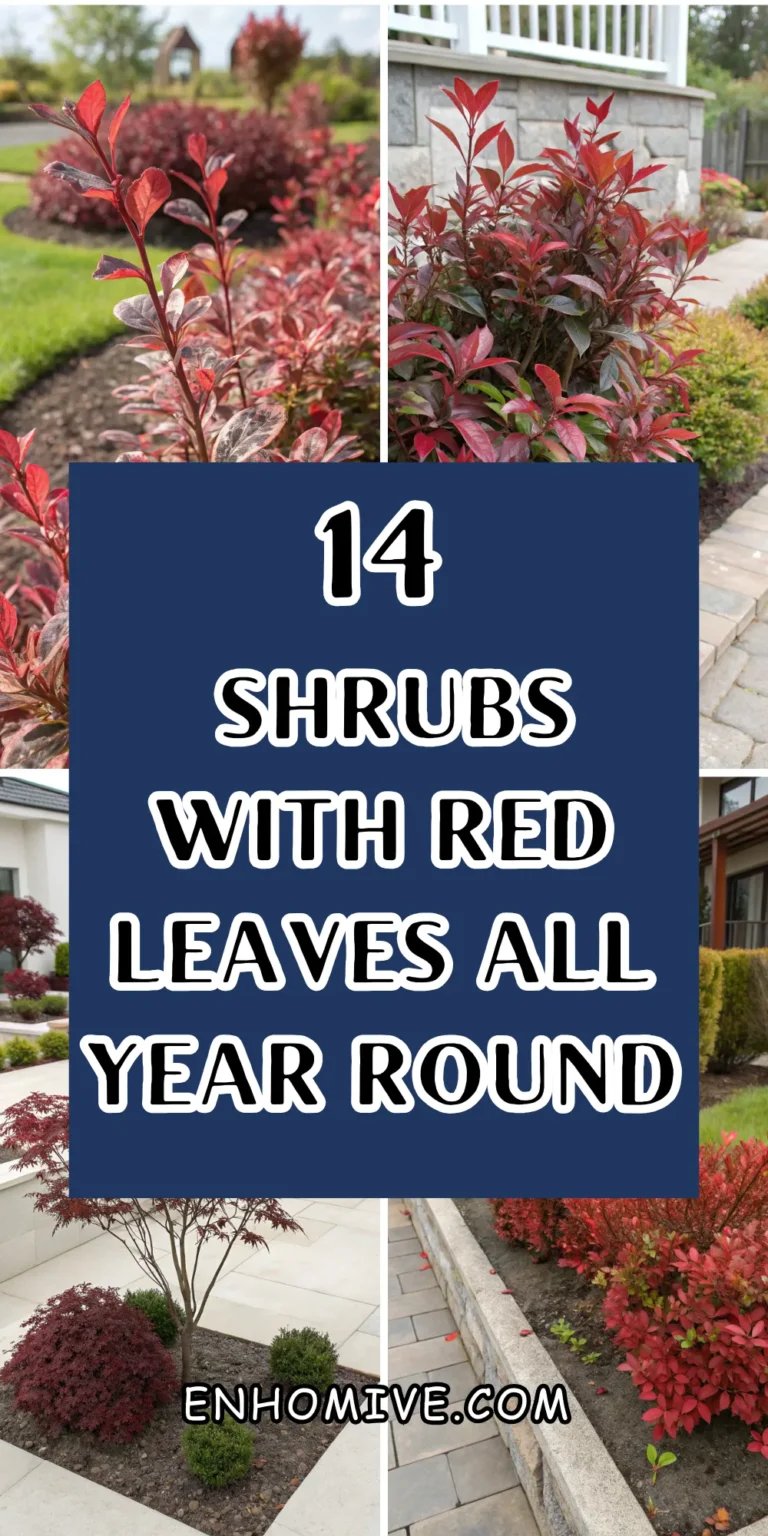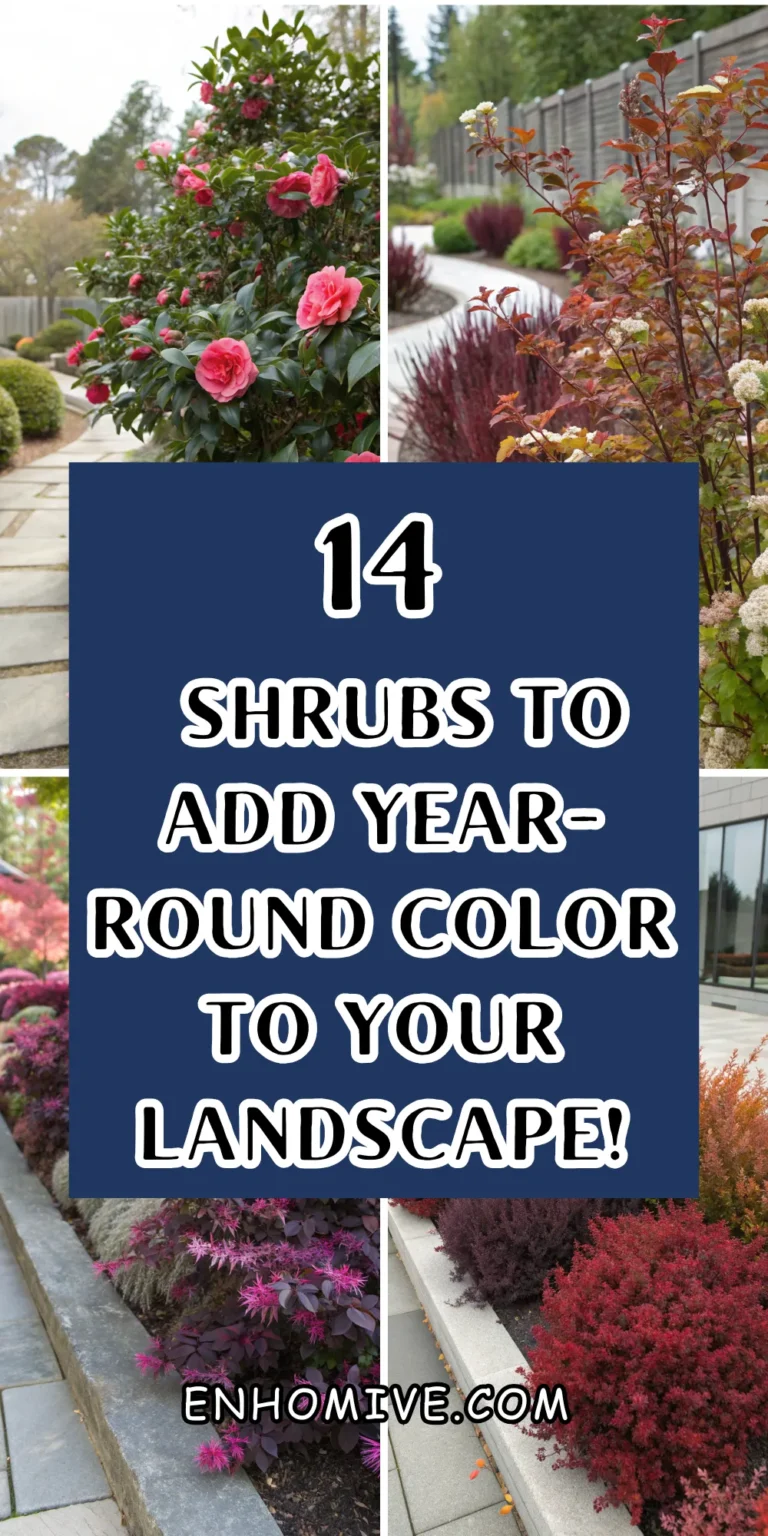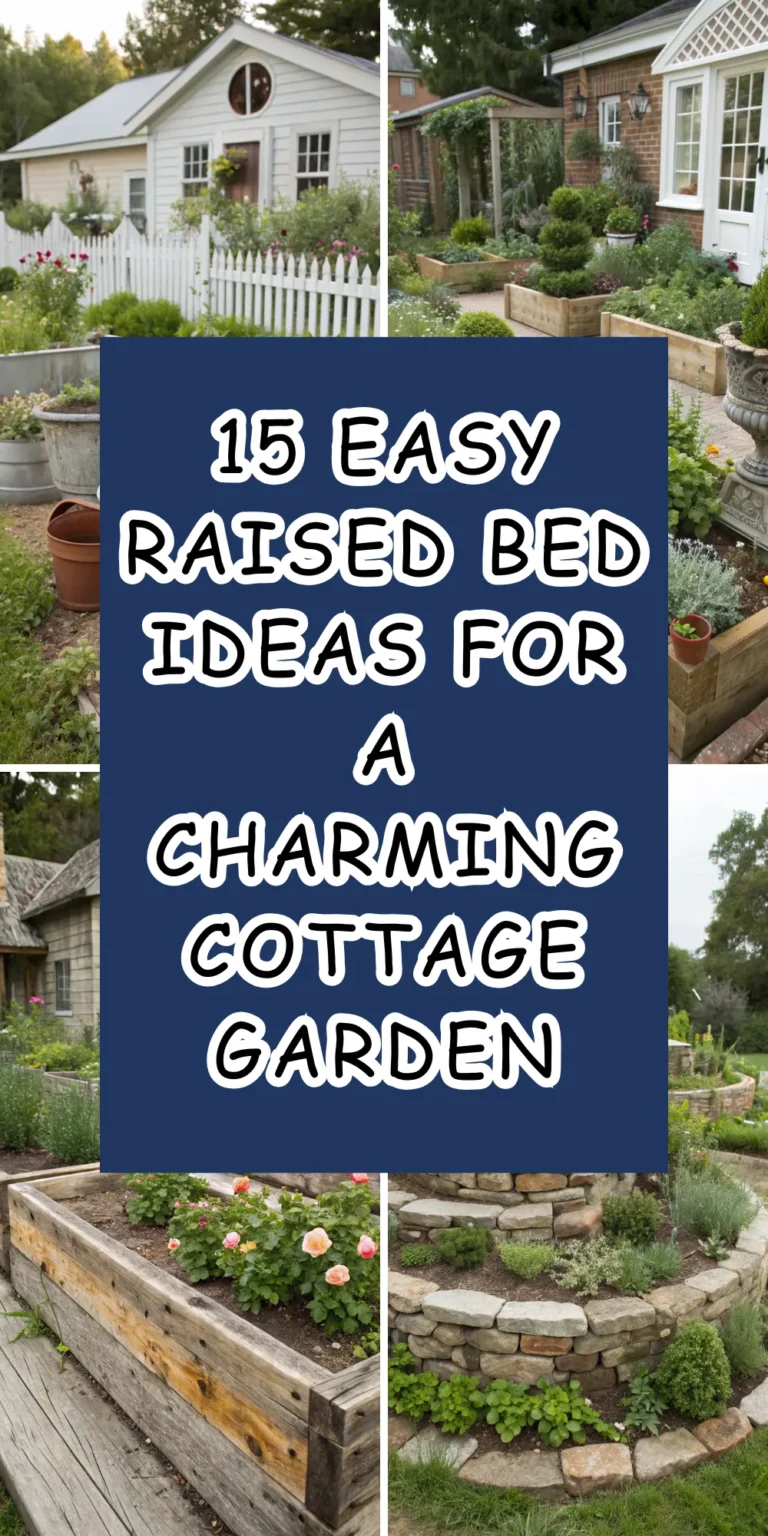13 Stunning Flower Bed Design Ideas to Explore
Your flower beds hold incredible potential to transform your entire landscape from ordinary to absolutely breathtaking. Smart design turns simple planting areas into living artwork that changes with seasons while providing year-round structure and beauty.
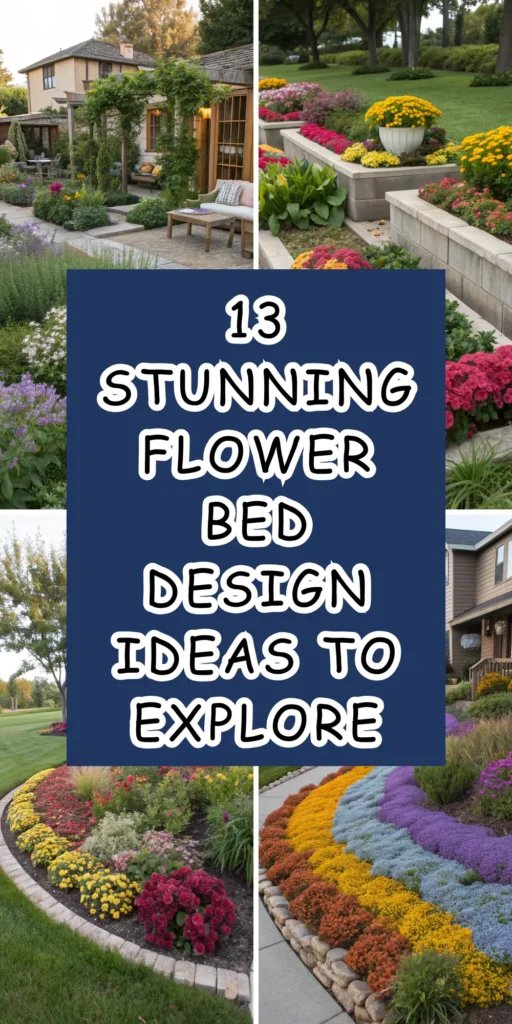
These stunning approaches prove that thoughtful planning and creative plant combinations create flower beds that stop traffic and make neighbors wonder how you achieved such professional-looking results.
Layered Height Drama
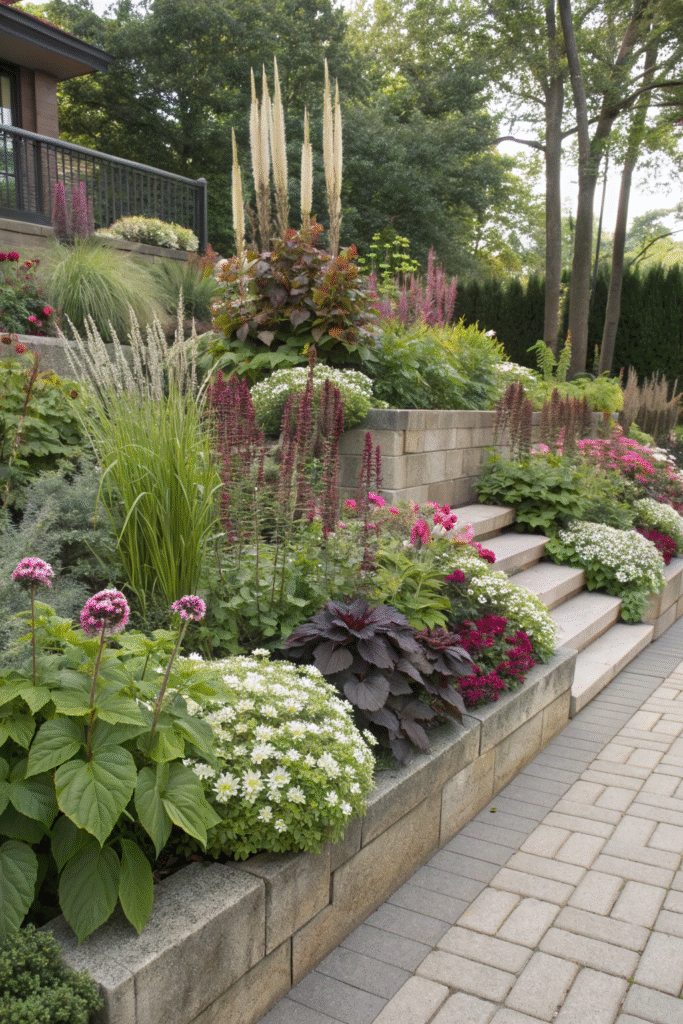
Create visual depth with plants arranged by height from shortest in front to tallest in back, but break this rule strategically with occasional tall plants brought forward for dramatic punctuation. This layered approach ensures every plant gets visibility while creating natural-looking compositions.
Choose plants with different bloom times to maintain interest throughout growing seasons. Mix perennials for structure with annuals for seasonal color bursts. Consider how foliage textures and colors contribute to the overall effect even when flowers aren’t blooming.
Color Wave Progressions
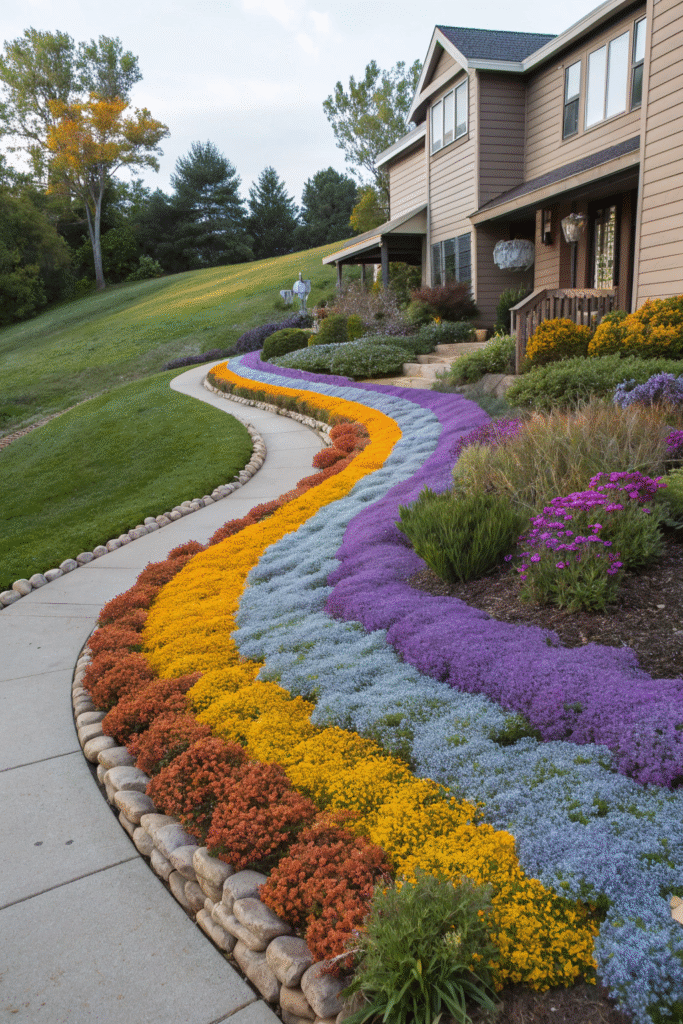
Design beds where colors flow like waves across the landscape, transitioning gradually from cool blues and purples through warm yellows and oranges. This sophisticated approach creates movement and visual excitement while maintaining harmony that pleases the eye.
Plan color progressions that work with your home’s exterior colors and existing landscape elements. Consider how different seasons affect color relationships as various plants bloom and fade. This technique works particularly well in long, narrow beds where you can see the full color journey.
Cottage Garden Abundance
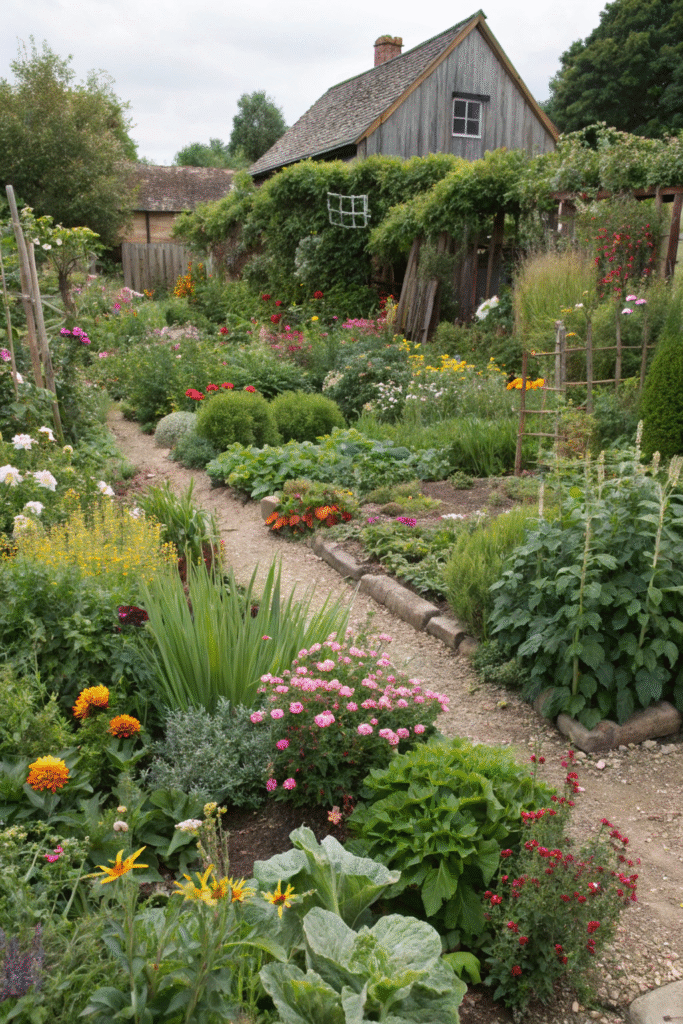
Embrace the romantic chaos of cottage gardens with mixed plantings that appear naturally seeded while actually following careful design principles. Combine vegetables, herbs, and flowers in seemingly random arrangements that create abundant, overflowing beauty.
Let plants self-seed and spread naturally while maintaining enough structure to prevent complete takeover. Choose plants that complement each other in growth habits and care requirements. This approach rewards gardeners who enjoy surprises and organic development over rigid control.
Modern Geometric Patterns
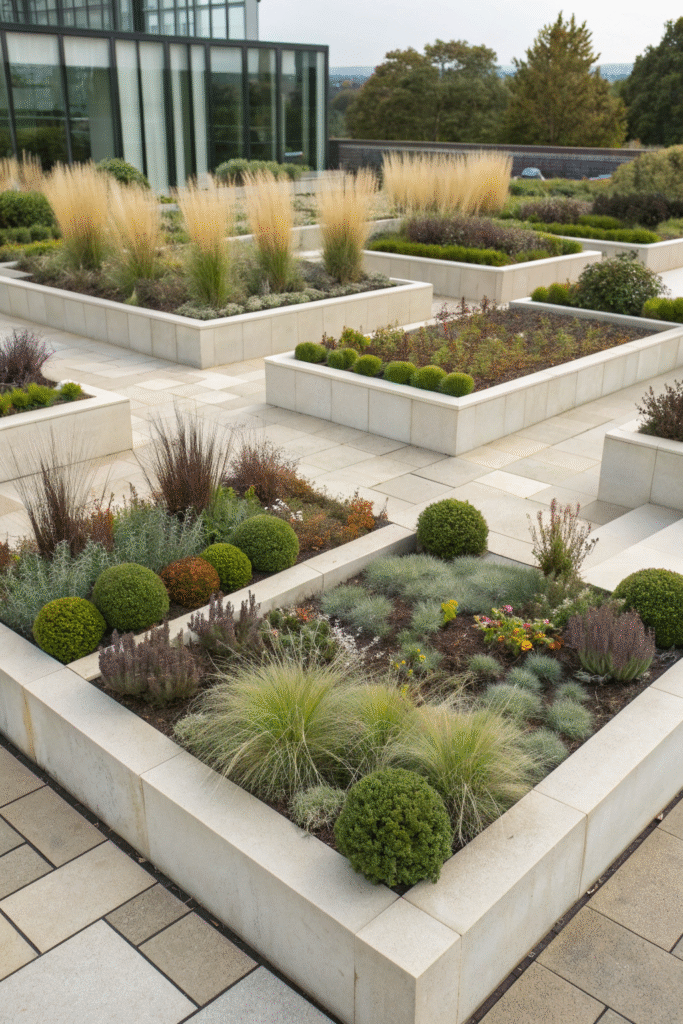
Create contemporary appeal with clean lines, repeated patterns, and sculptural plant arrangements that bring modern design principles to flower bed layouts. This approach works particularly well with architectural homes and formal landscape settings.
Choose plants with strong structural qualities like ornamental grasses, architectural perennials, and plants with distinct forms. Maintain consistent spacing and geometric relationships for the most striking modern effects. Consider how patterns look from different viewing angles throughout your property.
Seasonal Succession Planting
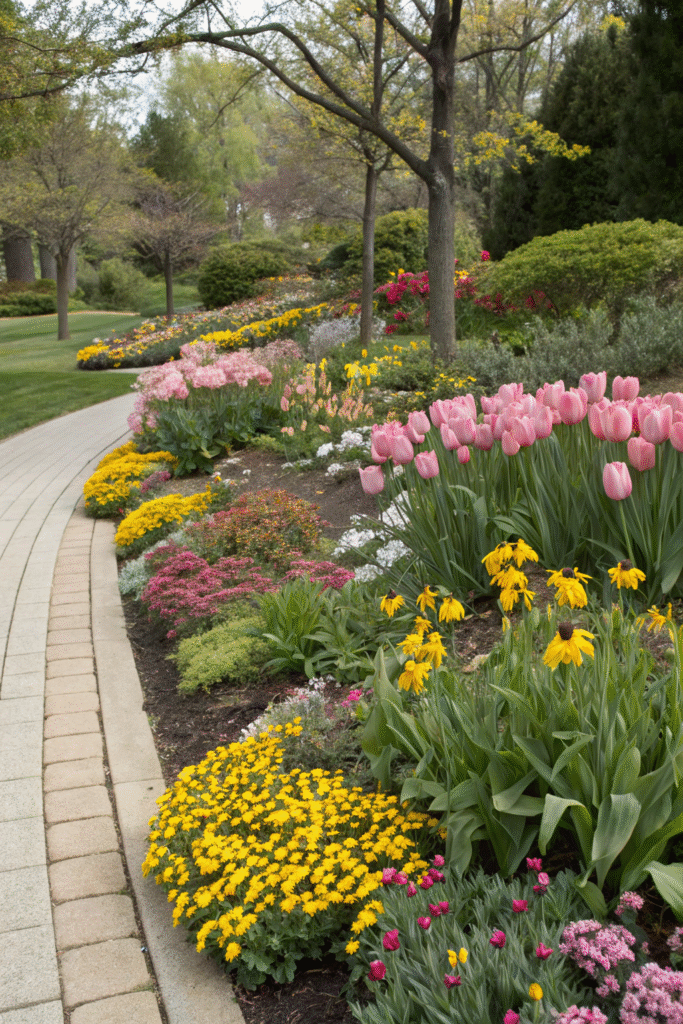
Design beds that peak during different seasons to ensure continuous interest throughout the growing year. Plan spring bulbs followed by summer perennials and fall-blooming varieties that create overlapping waves of color and texture.
Chart bloom times carefully to avoid gaps where beds look empty or uninteresting. Consider foliage plants that provide structure between flowering periods. This approach requires more planning but delivers gardens that offer something special during every season.
Cutting Garden Functionality
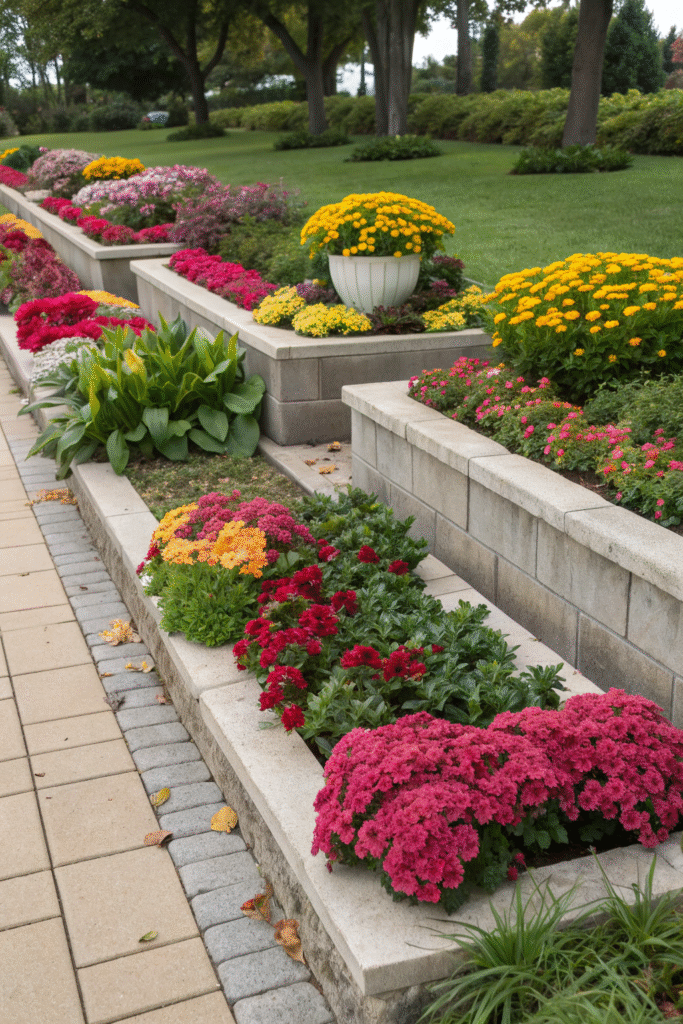
Create flower beds designed specifically for harvesting beautiful bouquets while maintaining attractive landscape appeal. This approach combines beauty with function, providing fresh flowers for your home while creating stunning outdoor displays.
Choose flowers with good cutting qualities and long vase life for maximum enjoyment both indoors and out. Plant in rows or blocks that make harvesting easy without destroying the bed’s overall appearance. Include foliage plants that provide greenery for arrangements.
Native Plant Ecosystems
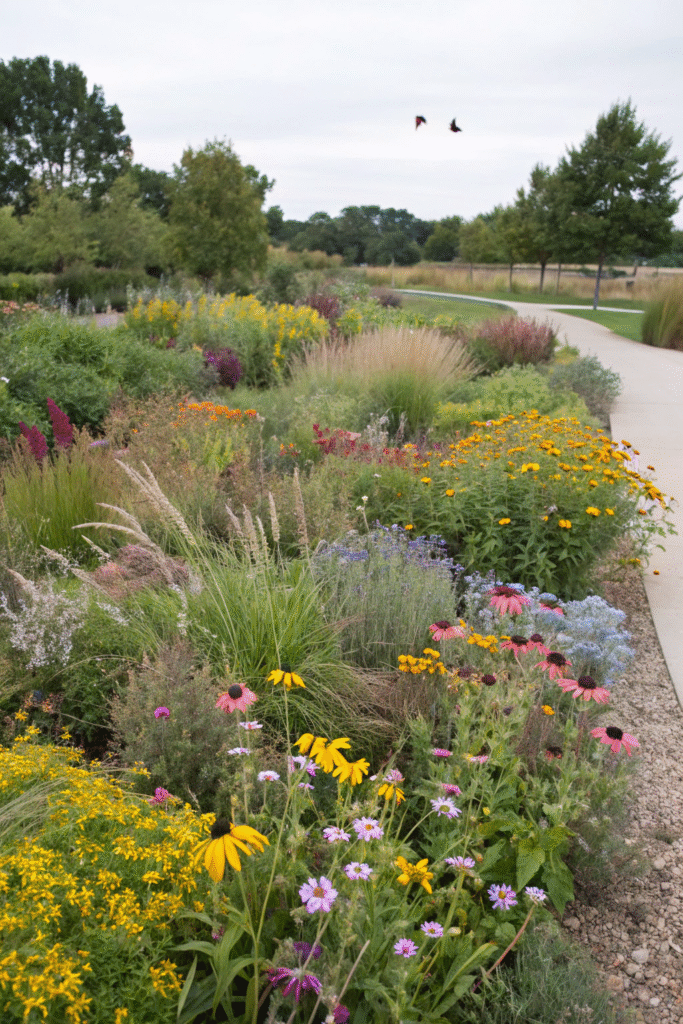
Design beds using plants native to your region that support local wildlife while requiring minimal water and maintenance once established. This approach creates authentic beauty that connects your garden with the surrounding natural landscape.
Research native plants that thrive in your specific soil and light conditions for the most successful establishment. Consider how native beds change throughout seasons and plan for natural dormancy periods. This approach often attracts beneficial insects and birds that enhance garden life.
Fragrance Garden Delight
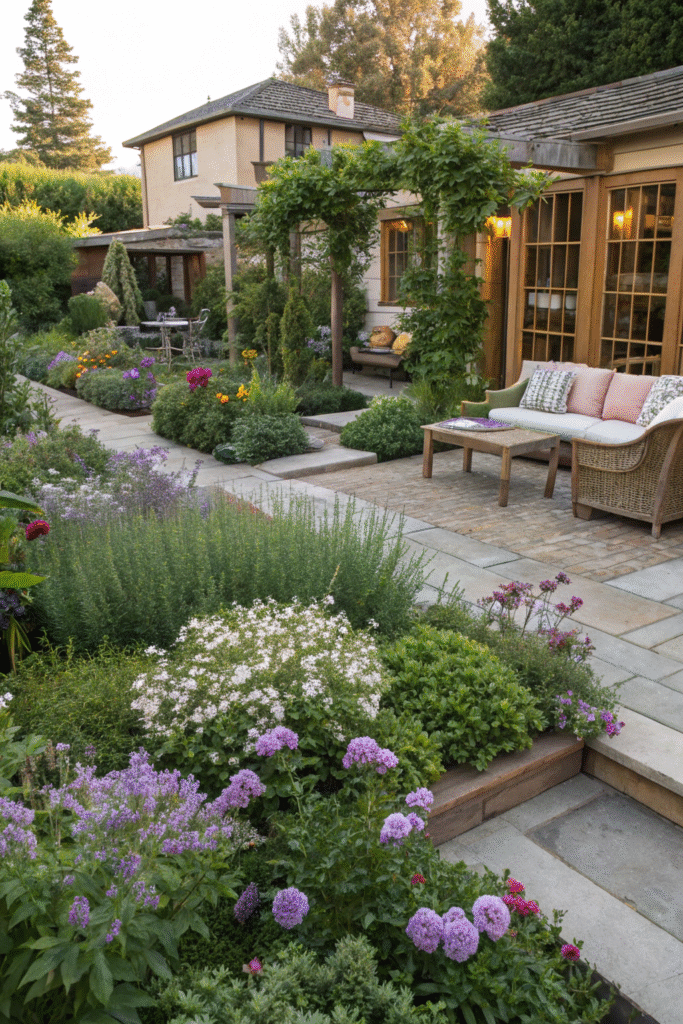
Plan flower beds that engage the sense of smell with fragrant flowers, herbs, and foliage plants positioned where their scents enhance outdoor living areas. This sensory approach adds another dimension to garden beauty while creating memorable experiences.
Position fragrant plants near seating areas, pathways, and windows where you’ll encounter their scents naturally. Consider how different fragrances combine and how bloom times affect scent availability. Evening-fragrant plants add special appeal for outdoor entertaining after dark.
Butterfly and Pollinator Paradise
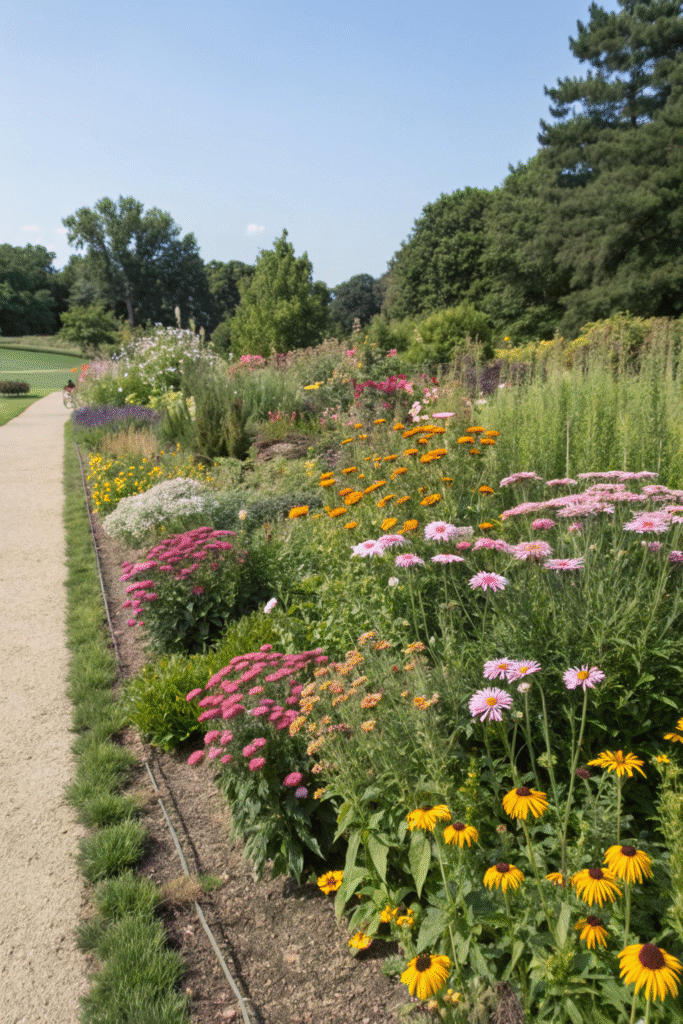
Design beds specifically to attract and support butterflies, bees, and other beneficial insects with plants that provide nectar throughout growing seasons. This approach creates dynamic, living gardens that change constantly with visiting wildlife activity.
Choose plants with different bloom shapes and nectar production patterns to support various pollinator species. Avoid pesticides that harm beneficial insects. Consider how pollinator gardens integrate with other landscape areas and maintenance requirements.
Shade Garden Sophistication
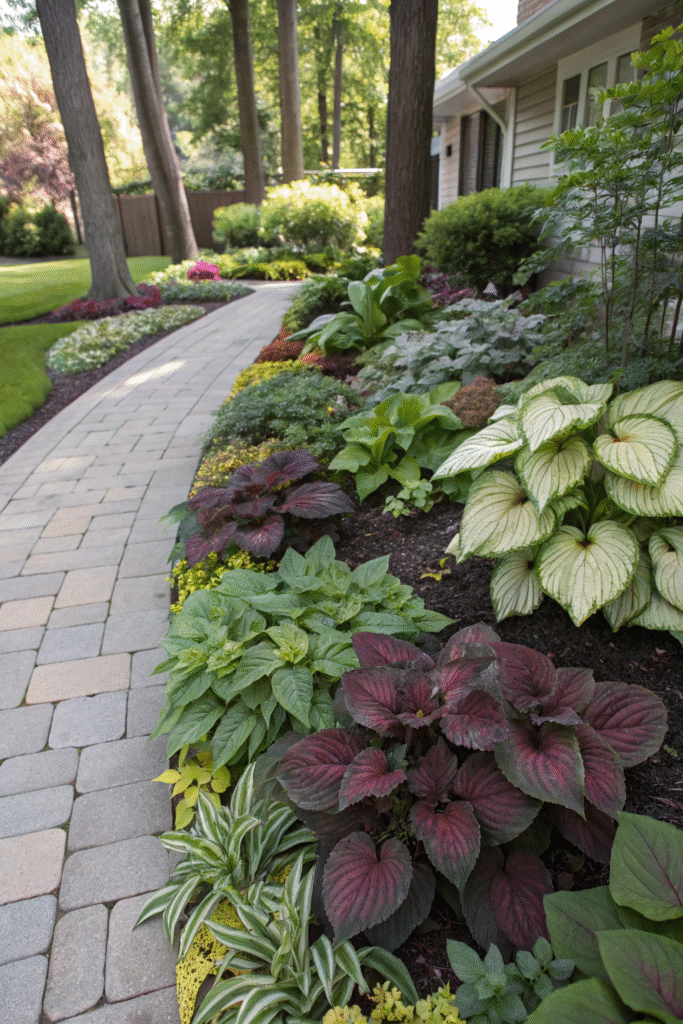
Transform challenging shade areas into sophisticated displays using plants that thrive in low-light conditions. This approach proves that shade gardens can be just as stunning as sunny flower beds when you choose plants that celebrate rather than merely tolerate shade conditions.
Focus on foliage textures, colors, and patterns that create interest without relying solely on flowers. Choose plants with different leaf shapes and colors for dynamic combinations. Consider how shade patterns change throughout seasons as trees leaf out and drop leaves.
Ornamental Grass Movement
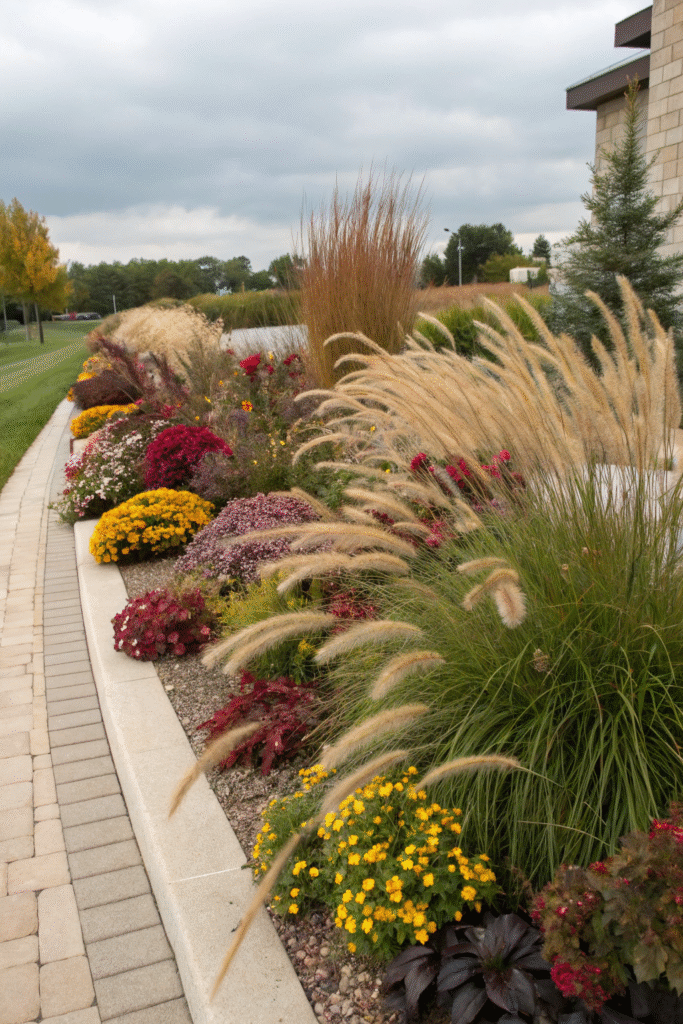
Incorporate ornamental grasses that add movement, texture, and seasonal interest while providing structure that anchors more ephemeral flower displays. These architectural plants create backbone elements that support changing seasonal plantings beautifully.
Choose grasses appropriate for your climate and space constraints, considering mature sizes and growth habits. Mix fine-textured grasses with bold, dramatic varieties for textural contrast. Consider how grasses look during winter months when deciduous varieties provide continued interest.
Island Bed Focal Points
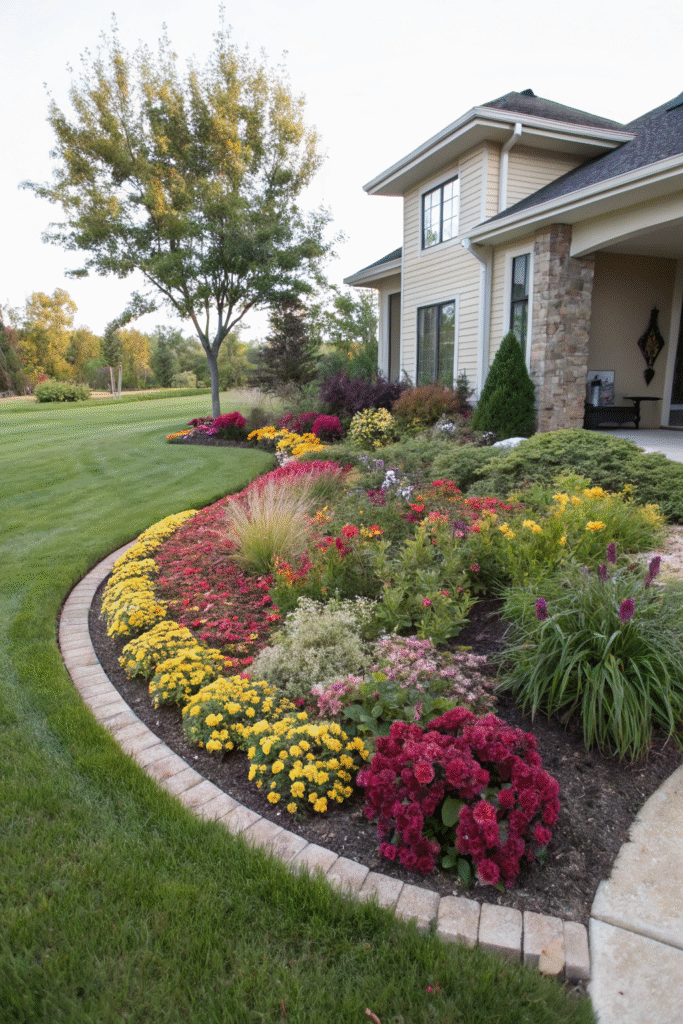
Create stunning focal points with island beds positioned in lawn areas or open spaces where they can be viewed from multiple angles. This approach lets you showcase prized plants while creating natural gathering points that enhance outdoor living areas.
Design island beds with interesting shapes that complement your landscape’s natural lines rather than rigid geometric forms. Consider how beds look from your home’s windows and main viewing areas. Choose plants that maintain appeal from all viewing angles throughout growing seasons.
Border Garden Integration
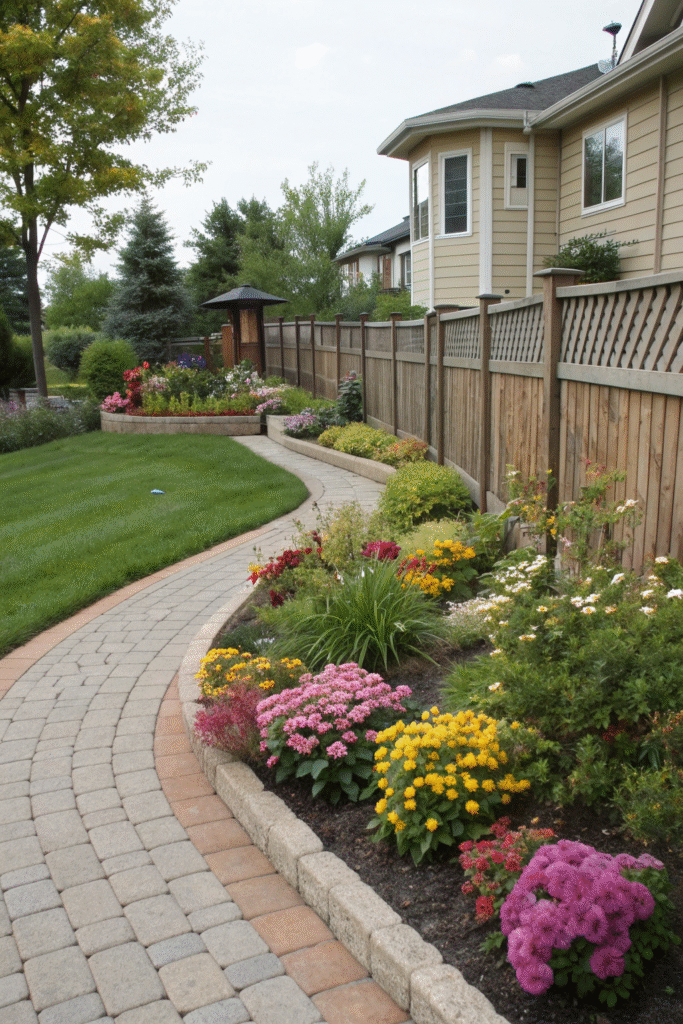
Design flower beds that seamlessly integrate with existing landscape features like fences, walkways, and property lines while creating natural transitions between different garden areas. This approach maximizes planting opportunities while maintaining cohesive landscape flow.
Consider how border beds frame and enhance architectural features rather than competing with them. Choose plants that complement nearby structures and hardscaping materials. Plan depths that accommodate mature plant sizes without overwhelming adjacent areas or creating maintenance challenges.
Stunning flower beds result from understanding how plants, colors, and textures work together to create living compositions that evolve beautifully throughout growing seasons. These design ideas prove that spectacular gardens come from thoughtful planning and plant selection rather than expensive materials or complex installation. Start with the approach that excites you most and fits your growing conditions, then let your garden develop its own personality as plants establish and mature. The most beautiful flower beds feel like they’ve grown naturally over time, creating the kind of garden magic that makes every day more beautiful.

